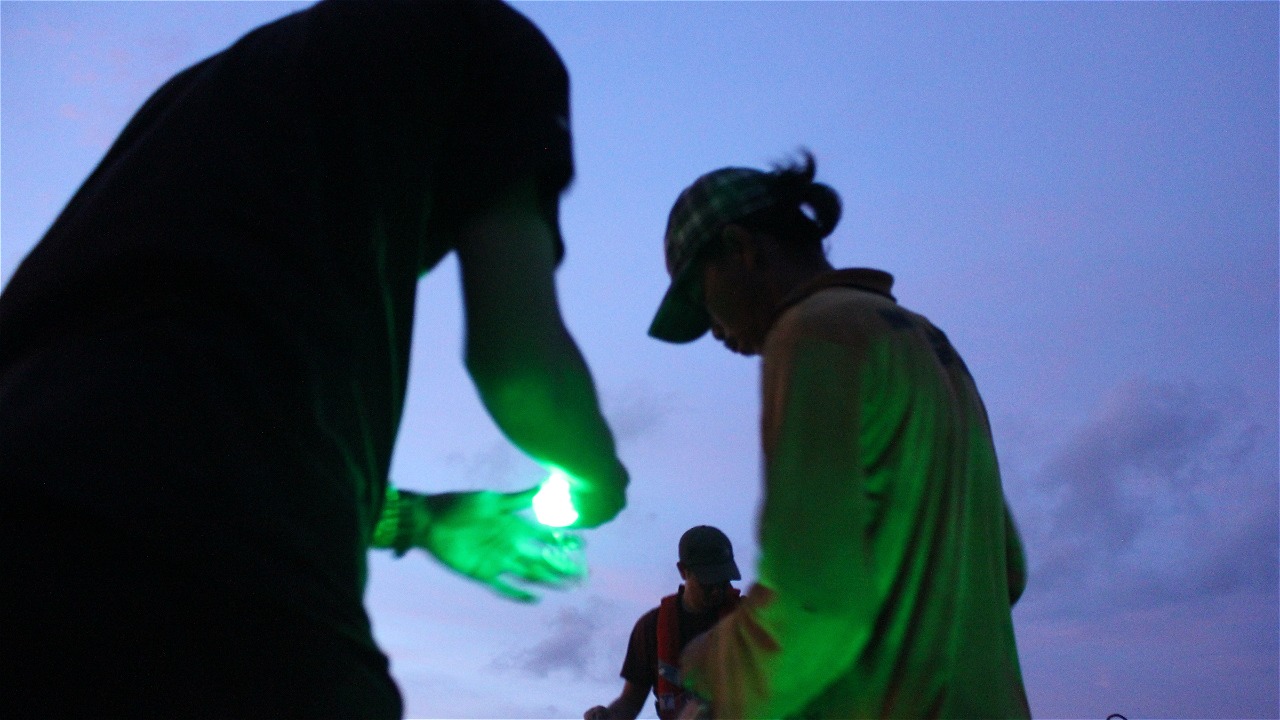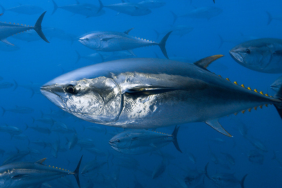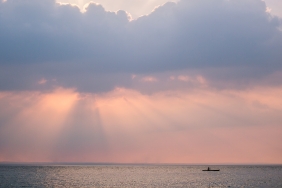A JOURNEY TO OVERCOME BYCATCH IN PALOH WITH THE GREEN LED LIGHT METHOD
By: Zulfian (Observer Bycatch)
Mitigation technology using lights (Green LEDs) as one of the resolutions of the Smartgear program that has been socialized by WWF-US and the National Oceanic and Atmospheric Administration (NOAA) since 2013 has been scientifically tested in Paloh District, Sambas Regency, West Kalimantan, due to the high number of bycatch identified in the area. At least, an estimated 500 sea turtles were caught accidentally or bycatch in the use of drift gillnet fishing gear in Paloh waters. Data held by WWF-Indonesia also states that the captured turtles are often released back by fishermen who have local beliefs about the prohibition of catching turtles.
One of the results of the workshop "Efforts to Mitigate Turtle Bycatch in Gillnets" that has been carried out is a trial effort in a different fishery. The Sambas Regency Marine and Fisheries Service (DKP), the Ministry of Marine Affairs and Fisheries (KKP), WWF-Indonesia along with NOAA and Paloh fishermen representatives followed up on the results of the meeting by conducting another trial using green LED lights. The trial, which aims to prove the effectiveness in reducing bycatch, was conducted by placing observers on the boat. The program, which has been implemented since 2014 until now, has attracted the attention of students from the Jakarta College of Fisheries (STP), Bogor Agricultural Institute (IPB) and Diponegoro University, Semarang, who are interested in research on green LED lights.
The green LED light trial was conducted on a monofilament-based gill net with 8-inch meshes installed at every 10-meter distance that had been marked. The net with a length of 1175 meters housed 117 green LEDs which were then installed about 2 km from the shoreline. Usually fishermen spread the net in the afternoon at 4:30 pm and lift the net at 2:00 am depending on the fishing location and weather, for approximately 10 hours the net is left in the water.
The experimental vessel and control vessel as media were also used in the implementation of the trial as a comparison to distinguish the results obtained by the observer. WWF-Indonesia's data from 2014 - 2016 showed a 75% decrease in sea turtle bycatch, but on the other hand an increase in target fish catch of 12.91 percent. This shows that the use of green LED lights is efficient in reducing turtle bycatch and increasing the selling value of fishermen's catch.
"When using LED lights, turtles are rarely hit by the trawl, fish yields have increased and the trawl is not damaged by turtles," said Pak Pendi, one of the fishermen who collaborated in the research implementation. This opinion is in line with other fishermen, namely Mr. Wardi, who participated in the green LED light trial program.
After almost three years of research in Paloh, the green LED light program has found a bright spot. Furthermore, WWF-Indonesia together with Hassanudin University (UNHAS) by involving local stakeholders such as BPSPL Makassar, Selayar Regional Government and Takabonerate National Park will conduct a follow-up program in the Selayar area as a result of the workshop. The fisheries trials to be conducted in Selayar are different to those conducted in Paloh. The research team used pomfret or demersal fisheries in the Paloh trial, while the Selayar trial used small pelagic fisheries. It is hoped that the green LED light trial in Selayar can be identified as effective at least in small pelagic fisheries.





